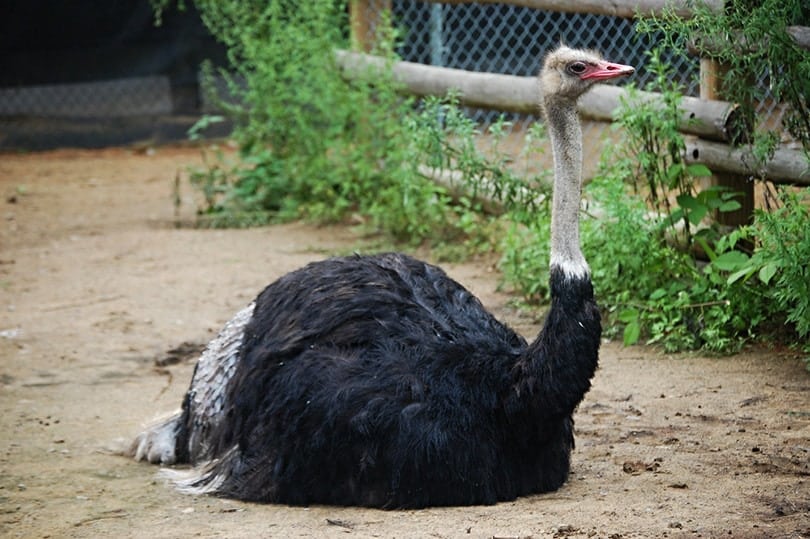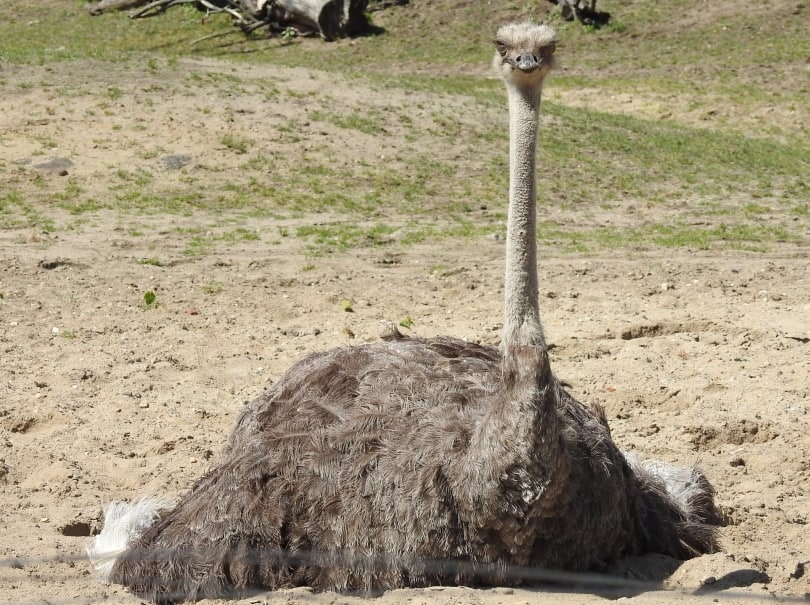If you think ostriches sleep soundly, think again! Not only do they seem completely awake when they slumber, with their eyes wide open and their necks in the air, but they also share this characteristic with a very strange animal, the platypus!
Indeed, unlike mammals and birds, there are no well-marked sleep cycles for the ostrich. This is a rare characteristic, found only in a few other primitive species, including the bizarre platypus.
Read on to learn what researchers have discovered by studying and filming ostriches during their particular sleep cycle.

Why Don’t Ostriches Sleep Like Other Birds?
In most mammals and birds, sleep is divided into two distinct phases: slow-wave sleep (SWS) and rapid eye movement (REM) sleep. Before an international team of biologists carried out research, it was known that only monotremes, the group to which the platypus belongs, exhibited a different and unique sleep cycle. As a result, this characteristic was seen as an ancestral trait because these animals are the most primitive of mammals.
Thus, in order to determine whether this primitive sleep also existed in the most ancestral group of birds (of which ostriches are a part), the researchers fitted six adult female ostriches with sensors so that they could monitor their sleep parameters. They recorded their brain activity through electroencephalograms and used other sophisticated tools to find out how ostriches sleep.

The Surprising Results Researchers Found About Ostrich Sleep
On the one hand, in modern mammals and birds, deep sleep (SWS, for slow-wave sleep) is characterized on one side by brain waves of large amplitude and low frequency.
REM sleep, on the other hand, features high-frequency, low-amplitude brain waves. This demonstrates activation of the cerebral cortex, which is characterized by a state close to the waking state. Thus, REM sleep is characterized by rapid eye movements and a decline in muscle tone.
In principle, these two sleep phases do not intersect in the brain: either you sleep in a deep sleep, or you are in REM sleep. But in the ostrich, just like in the platypus, these two phases of sleep intersect in the brain, which results in a mixed sleep.
Indeed, when ostriches sleep, their brain exhibits many REM episodes that also show the other typical features of deep sleep (SWS): this occurs when the two types of brain waves “cross.” So, in a way, it’s like the ostriches were only pretending to sleep!
For the researchers, it is no coincidence that the ostrich and the platypus, the two most ancestral species of the group of birds and of mammals, have a similar sleep. According to them, an evolutionary process caused sleep to evolve independently for the two groups but along the same path: by making the two states emerge within a mixed sleep, then by separating them into distinct phases, namely REM and slow-wave sleep.
Final Thoughts
Ostriches are fascinating animals. Not only do they differ from other birds by their massive, flightless bodies, but they also sleep in a completely different way. In fact, it’s not that surprising, considering they are among the most ancestral group of birds. This probably explains why their sleep did not evolve in the same way as other birds, just like another primitive animal, the extraordinary platypus.
Note: If you’re interested in seeing how ostriches sleep, you can watch the researchers’ video here.
- You may also be interested in: Do Ostriches Spit? Ostrich Aggression Explained
Featured Image Credit: Piqsels
